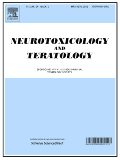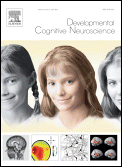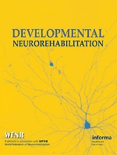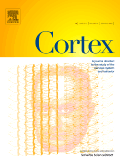
NEUROTOXICOLOGY AND TERATOLOGY
Scope & Guideline
Pioneering insights into the effects of toxins on neural development.
Introduction
Aims and Scopes
- Developmental Neurotoxicity:
Research on how various chemical exposures during critical periods of development (e.g., pregnancy, early childhood) lead to neurotoxic effects, including cognitive, behavioral, and motor deficits. - Teratogenic Effects of Substances:
Investigation of the effects of drugs, environmental pollutants, and other substances on congenital malformations and neurodevelopmental disorders. - Psychosocial Stressors:
Exploration of how maternal stress, mental health, and socioeconomic factors influence fetal and child neurodevelopment. - Animal Models and Experimental Studies:
Utilization of various animal models (e.g., zebrafish, rodents) to study the mechanisms and pathways through which developmental exposures lead to neurobehavioral changes. - Epidemiological and Cohort Studies:
Analysis of human cohort data to understand the relationships between prenatal exposures and long-term neurodevelopmental outcomes. - Policy and Regulatory Issues:
Discussion on regulatory requirements and public health implications related to developmental neurotoxicology and teratology.
Trending and Emerging
- Impact of Emerging Contaminants:
Increased research on the effects of emerging contaminants such as PFAS (per- and polyfluoroalkyl substances) and their neurodevelopmental impacts, highlighting growing environmental concerns. - Multisubstance Exposure Research:
A trend towards studying the effects of combined exposures to multiple substances (e.g., tobacco, cannabis, alcohol) during critical developmental windows, reflecting real-world co-use patterns. - AI and Computational Approaches:
Emerging use of artificial intelligence and machine learning techniques for screening and assessing developmental toxicity, indicating a technological advancement in research methodologies. - Intergenerational Effects of Exposure:
Growing interest in understanding how prenatal exposures affect not just the immediate offspring but also subsequent generations, emphasizing the long-term ramifications of toxic exposures. - Psychosocial and Environmental Interactions:
An increasing emphasis on how psychosocial factors interact with chemical exposures to influence neurodevelopmental outcomes, reflecting a more holistic approach to research.
Declining or Waning
- Traditional Pharmacological Studies:
Research focusing solely on the pharmacological effects of medications on development has decreased, potentially due to a shift toward understanding complex interactions of substances and environmental factors. - Single-Agent Exposure Studies:
There is a noticeable decline in studies examining the effects of single chemical exposures, as the field increasingly recognizes the importance of studying mixtures and cumulative exposures. - Non-Experimental Observational Studies:
There has been a reduction in non-experimental studies that do not employ robust methodologies, as the field moves towards more rigorous experimental designs and mechanistic investigations. - Focus on Adult Neurotoxicity:
Research concentrating on neurotoxic effects in adult populations is waning, reflecting a stronger emphasis on developmental stages and their long-term implications.
Similar Journals

Developmental Cognitive Neuroscience
Unveiling the mysteries of cognitive growth and brain function.Developmental Cognitive Neuroscience is a leading interdisciplinary journal published by ELSEVIER SCI LTD, dedicated to advancing the field of cognitive neuroscience with a specific focus on the developmental aspects of brain function and behavior. Since its inception in 2011, this Open Access journal has continued to thrive, gaining significant recognition with a remarkable impact factor that places it in the Q1 category of cognitive neuroscience, ranking 22nd out of 115 in Scopus. This enhances its visibility and accessibility to a global audience, including researchers, clinicians, and students keen on exploring the intricate relationship between cognitive development and neurological processes. The journal embraces a wide array of topics, from the impact of early life experiences on cognitive outcomes to neurodevelopmental disorders, fostering an enriching platform for disseminating high-quality research and innovative findings. As it progresses towards 2024, Developmental Cognitive Neuroscience remains pivotal in shaping future research and understanding in the field.

Review Journal of Autism and Developmental Disorders
Showcasing excellence in autism research.Review Journal of Autism and Developmental Disorders, published by Springer Heidelberg, stands as a leading platform for the dissemination of groundbreaking research in the realm of autism and developmental disorders. With an ISSN of 2195-7177 and an E-ISSN of 2195-7185, this journal not only showcases high-quality research but also emphasizes the crucial intersections between behavioral neuroscience, cognitive neuroscience, developmental neuroscience, and psychiatry. Notably, the journal has achieved a prestigious Q1 ranking across these categories, reflecting its impact and relevance; it ranks 10th in behavioral neuroscience and 5th in developmental neuroscience within Scopus metrics. Spanning from 2014 to 2024, the journal is dedicated to fostering a deeper understanding of autism spectrum disorders and related conditions, making it indispensable for researchers, clinicians, and students alike. While it operates under a traditional access model, the quality of the peer-reviewed articles ensures that it remains a valuable resource in the academic community.

ENVIRONMENTAL HEALTH PERSPECTIVES
Empowering global health through open-access research.Environmental Health Perspectives (EHP) is a premier open-access journal published by the U.S. Department of Health and Human Services, Public Health Science, dedicated to publishing rigorous and impactful research in the field of environmental health. Since its inception in 1972, EHP has become a leading platform for disseminating knowledge on the interactions between the environment and human health, making significant contributions to the fields of toxicology and public health. With an impressive impact factor and a Q1 ranking in both Health, Toxicology and Mutagenesis and Public Health, Environmental and Occupational Health categories, EHP ranks among the top journals globally, reflecting its high citation and visibility within the academic community. Researchers, professionals, and students alike will find a wealth of vital information within its pages, as EHP covers a wide array of topics related to environmental exposures, health outcomes, and policy implications. Furthermore, EHP engages with a global audience through its commitment to open access, ensuring that critical research is available to all, enhancing the collective understanding of environmental health issues since 1972.

Toxicology and Environmental Health Sciences
Bridging Research and Practice in Environmental Health SciencesToxicology and Environmental Health Sciences is a peer-reviewed journal published by the Korean Society for Environmental Risk Assessment & Health Science, dedicated to advancing the fields of toxicology and environmental health. With an ISSN of 2005-9752 and E-ISSN 2233-7784, this journal serves as a vital platform for researchers, professionals, and students seeking to explore the intricate relationships between environmental risks and public health. Operating from South Korea, it has a converged years span from 2009 to 2024, and currently holds a respectable Q3 quartile ranking in both Health, Toxicology and Mutagenesis and Toxicology. This positions the journal within a critical space for those invested in understanding and mitigating environmental health challenges. Although not an open-access journal, it continues to foster high-impact research, contributing to a better understanding of toxicological sciences and environmental health dynamics. Engage with the latest findings and discussions that shape this evolving field through the insightful articles published herein, reinforcing its importance as a resource for scholars and practitioners alike.

Current Research in Toxicology
Navigating the Landscape of Toxicological DiscoveryCurrent Research in Toxicology is a pioneering journal published by ELSEVIER that serves as a vital platform for disseminating cutting-edge research in the field of toxicology, spanning from biological impacts to pharmacological applications. With an ISSN of 2666-027X and an impressive Q2 ranking in key categories such as Applied Microbiology and Biotechnology, Health, Toxicology and Mutagenesis, and Toxicology, this journal underscores its commitment to high-quality research and significant contributions to the scientific community. Based in the Netherlands, Current Research in Toxicology aims to bridge the gap between academia and industry by providing rigorously peer-reviewed articles that cover a wide array of topics including novel methodologies, regulatory challenges, and emerging trends within the domain. The journal is accessible through various platforms, making it essential for researchers, professionals, and students eager to stay updated on the latest findings and advancements in toxicology. With a comprehensive focus on integrating theory with practical application, this journal is poised to influence future studies and policies in health and environmental science.

JOURNAL OF COGNITIVE NEUROSCIENCE
Transforming knowledge of the brain into transformative insights.Welcome to the JOURNAL OF COGNITIVE NEUROSCIENCE, a premier publication in the field of cognitive neuroscience, published by the esteemed MIT PRESS. Since its inception in 1989, this journal has been at the forefront of advancing our understanding of the neural mechanisms underlying cognitive processes, boasting an impressive convergence period through 2024. With its Q1 ranking in the 2023 cognitive neuroscience category, it stands out among 115 peers, indicating its critical role in shaping contemporary research. The journal offers a comprehensive array of research articles, reviews, and methodologies aimed at researchers, professionals, and students alike, facilitating the exploration of complex cognitive functions. While not an open-access journal, it provides essential insights and significant contributions to the neuroscience community, making it an invaluable resource for anyone keen on delving into the intricacies of the human brain.

Developmental Neurorehabilitation
Catalyzing breakthroughs in neurorehabilitation for children.Developmental Neurorehabilitation is an esteemed journal published by Taylor & Francis Inc, dedicated to advancing the field of developmental neuroscience and rehabilitation. With an ISSN of 1751-8423 and an E-ISSN of 1751-8431, this journal serves as a vital resource for researchers, clinicians, and students interested in innovative therapeutic approaches and rehabilitation techniques for children and adolescents. Since its inception in 1997, Developmental Neurorehabilitation has focused on disseminating high-quality research, contributing to a deeper understanding of recovery processes in developmental disorders, and facilitating interdisciplinary dialogue among professionals. With its recognition in Q2 and Q3 quartiles across prominent categories such as Pediatrics and Rehabilitation, it stands out as a pivotal publication in its field, boasting Scopus rankings that reflect its significant impact—ranked #53 in Rehabilitation and #139 in Pediatrics, among others. While maintaining a commitment to quality research, the journal does not currently offer open access but remains accessible through institutional subscriptions, further enriching the academic landscape with critical insights into rehabilitation methodologies for developmental challenges and promoting better clinical practices to improve patient outcomes.

GENES BRAIN AND BEHAVIOR
Charting New Territories in Genes, Brain, and Behavioral ScienceGENES BRAIN AND BEHAVIOR is a leading journal published by Wiley that focuses on the intricate interplay between genetic factors and behavioral neuroscience. With a robust ISSN of 1601-1848 and an E-ISSN of 1601-183X, this journal serves as a premier platform for innovative research that spans across multiple fields including genetics, neurology, and behavioral neuroscience. Recognized for its significant impact with a 2023 categorization of Q1 in Behavioral Neuroscience and Q2 in both Genetics and Neurology, GENES BRAIN AND BEHAVIOR asserts itself as an influential resource for scholars, practitioners, and students alike, facilitating the advancement of knowledge in these dynamic areas. Its Scopus rankings underscore its prominence—ranking #18 in Behavioral Neuroscience and #45 in Neurology, placing it in the top percentiles among its peers. Although not an open-access journal, the rigorous peer-review process ensures high-quality publications, pivotal for those pursuing cutting-edge research and applications. With a history of convergence from 2002 to 2024, this journal continues to foster academic dialogue and discovery in the ever-evolving landscape of brain and behavioral studies.

CORTEX
Pioneering Research in Psychology and NeurologyCORTEX is a premier international journal published by Elsevier Masson, focusing on the cutting-edge areas of cognitive neuroscience, psychology, and neurology. With an impressive impact factor that places it in Q1 quartiles across multiple categories such as Cognitive Neuroscience and Neuropsychology, this journal serves as a vital resource for researchers, clinicians, and students alike. Established in 1964, CORTEX has continued to excel in disseminating high-quality scholarly work, offering insights that significantly enhance our understanding of the brain's functioning and behavior. Although not an open-access publication, it provides various access options to ensure the dissemination of knowledge is as wide-reaching as possible. As the field of cognitive psychology evolves, CORTEX remains at the forefront, fostering an environment for interdisciplinary collaboration and innovation. Researchers seeking to stay engaged with the latest advancements will find CORTEX an indispensable tool for their professional development.

NEUROTOXICITY RESEARCH
Advancing the Science of NeurotoxicologyNEUROTOXICITY RESEARCH is a premier journal published by SPRINGER, focusing on the critical and evolving field of neurotoxicology. With an ISSN of 1029-8428 and an E-ISSN of 1476-3524, this journal serves as a vital platform for researchers, professionals, and students dedicated to understanding the impact of toxic substances on nervous system health. Established in 1999, NEUROTOXICITY RESEARCH has consistently contributed significant findings and discussions that influence both theoretical and applied neuroscience. The journal's impressive Q2 ranking in both Neuroscience (miscellaneous) and Toxicology categories, alongside its strong percentile rankings in Scopus, underscores its relevance and quality in the academic community. While this journal is not open access, it remains a critical resource for those seeking interdisciplinary insights into the mechanisms of neurotoxicity. The objective of NEUROTOXICITY RESEARCH is to elucidate the intricate interactions between environmental and chemical agents and their neurotoxic effects, guiding future research and policies aimed at safeguarding neurological health. Based in the United States at ONE NEW YORK PLAZA, SUITE 4600, NEW YORK, NY 10004, this journal is committed to advancing the understanding of neurotoxic mechanisms and fostering collaborative efforts within the scientific community.